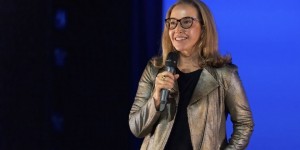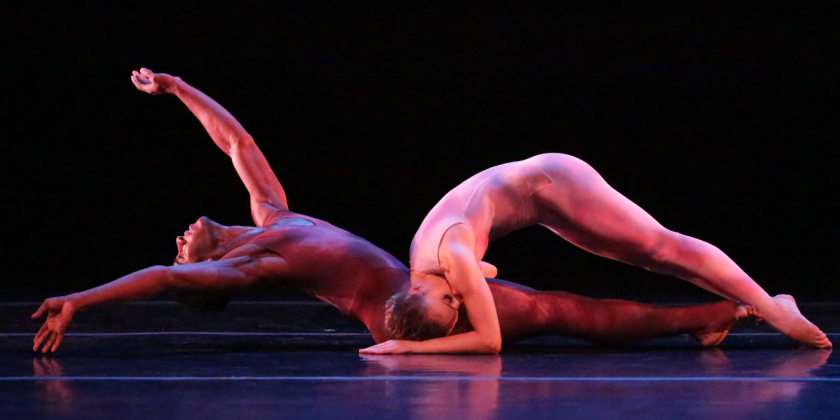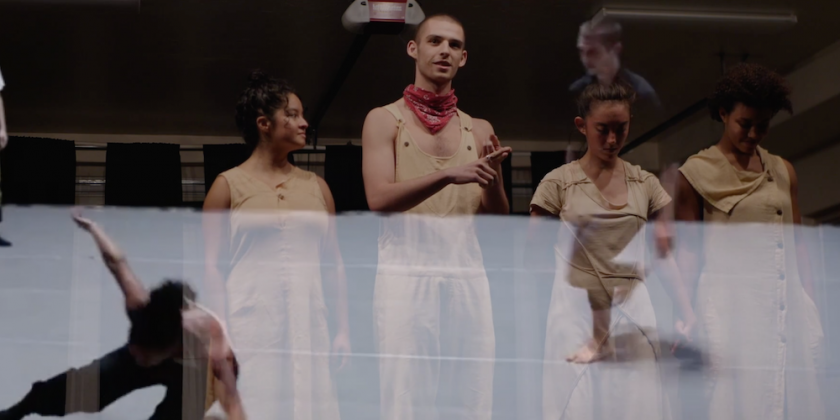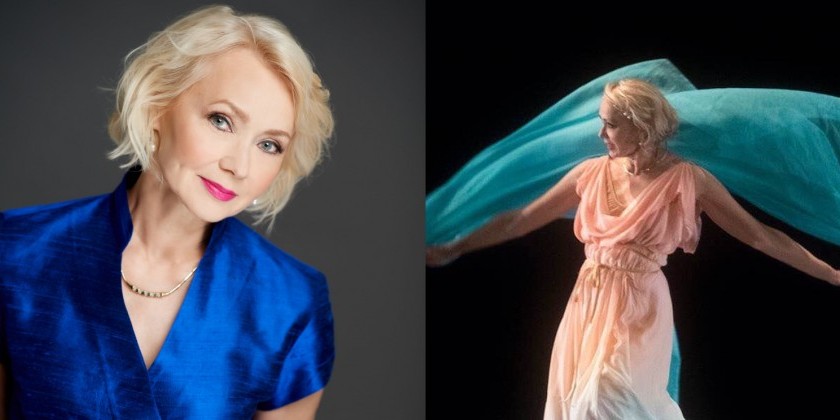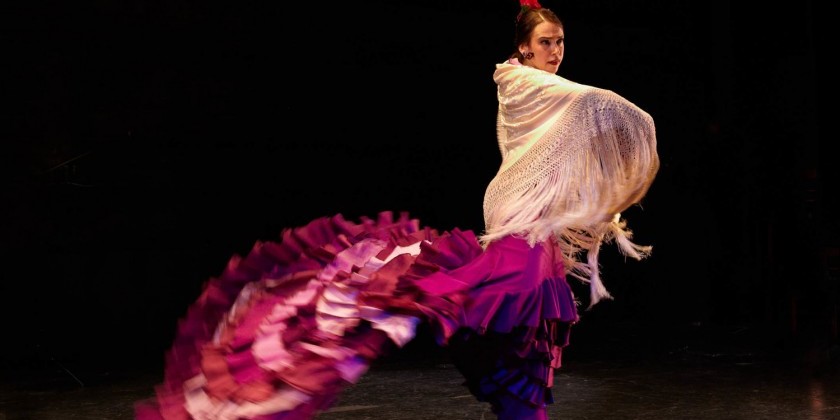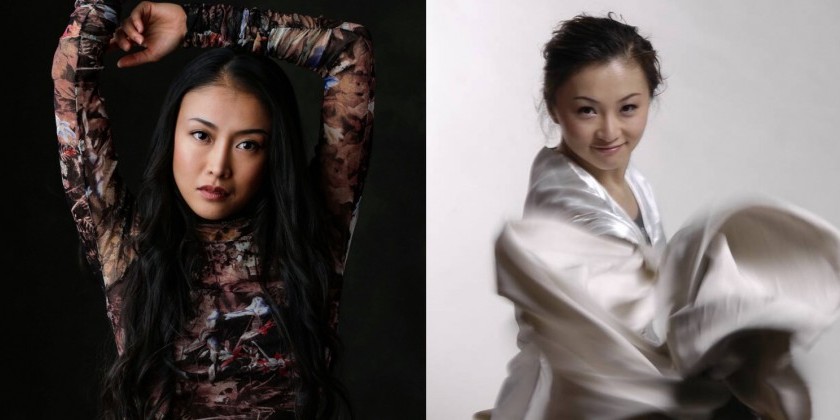The Dance Enthusiast Asks Yehuda Hyman/ Mystical Feet Company About “THE MAR VISTA” and Wartime Romance
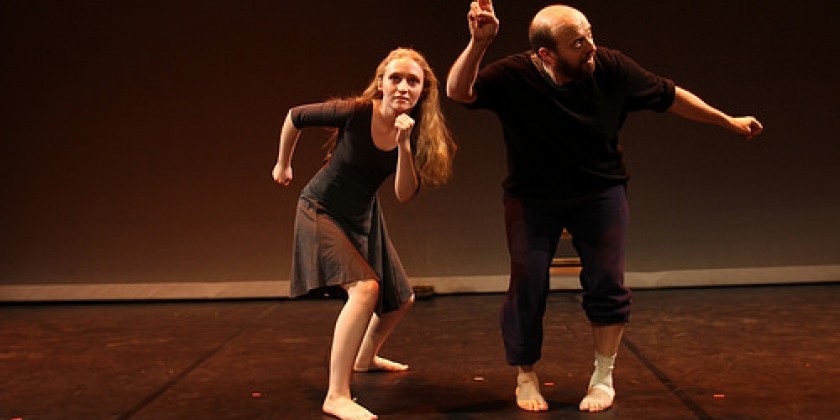
Presented by LABA, a laboratory for Jewish culture.
Creative Credits:
Artistic Director & Choreographer: Yehuda Hyman
Performers: Yehuda Hyman, Ron Kagan, Dwight Kelly and Amanda Schussel
Costume Designer: Amy Page
Performance Details:
When: June 11-14, 2015
Where: The Theater at the 14th Street Y, East 14th Street (14th St & lst Ave)
Tickets: $18 presale, $22.50 at the door. Call 646-395-4310 or buy online.
More info HERE.
THE MAR VISTA is performed in 3 parts:
I: Hamsa, a solo performed by Hyman, deals with curses, Passover, the 10 plagues and his father.
II: Leaning Into Moisture, a duet for Hyman and Amanda Schussel, concerns his mother and her forbidden wartime romance in Istanbul.
III: Cincinnati takes place in Cincinnati in 1951. Specifically, on the night that Hyman’s father proposed to his mother – in a hurry.
Yehuda Hyman and Amanda Schussel in Part II - "Leaning into Moisture." © Paula Court.
Sammi Lim for The Dance Enthusiast: Tell me about Mystical Feet Company. When was it founded? Why the endearing name? What qualities characterize your dance troupe?
Yehuda Hyman, Artistic Director of Mystical Feet Company: This engagement marks the premiere of Yehuda Hyman/Mystical Feet as an entity, but is something I have been building for the last four years. You might say that it was officially founded in December 2014 when I gathered a small group of performing artists whom I was very interested in collaborating with. Mystical Feet is a dance/theater company, which is about making dances, telling stories and weaving spells - I think that says what we do.
Why "feet" and not Mystical Fingers or Mystical Elbows? Well, a few reasons. First: for many years, I have been working with Hasidic tales that delve into the world of Jewish mysticism. The tale "7 Beggars" told by Rabbi Nachman of Breslov in 1810 concerns seven beggars, each with a disability, which is in fact their greatest gift. The seventh Beggar in the story has no feet. This beggar, appearing footless to our world, actually has the most dynamic feet. There is an interpretation, which calls to me, that when this footless beggar dances, the entire world will be transformed and perfected. Another reason is: as a 15-year old dance student, I came to New York to audition for a scholarship to study with a dance school in Europe. I had only been studying ballet for about a year, but I had a fervent desire to dance. I entered a class taught by a very famous ballet teacher at the time (I will never say who). The class was packed with about 50 dancers. The teacher walked by me as I did my téndus and said in an extremely loud and theatrical voice: "Young man, you have the ugliest feet I have ever seen!" I laugh about it now and actually, even at the time I thought it was funny. I love the idea of what is considered the lowest being the highest. Our feet are the lowest point on our bodies, but they touch the earth and through that connection, we have the potential to turn things upside down… Mystical Feet!
Yehuda Hyman performs solo in Part I - "Hamsa." © Paula Court.
TDE: Is this your first time working with LABA or have you collaborated prior? How is THE MAR VISTA inspired by Jewish texts?
YH: LABA: A Laboratory for Jewish Culture, which is in residence at the 14th Street Y in Manhattan, has a Fellowship Program. I was a LABA Fellow for 2013/2014. It was a fabulous experience. We would meet as a group at least once a month to study ancient Jewish texts, discuss, dissect, and eat! Every LABA Fellowship year has a different theme - mine was "Mother." As soon as I saw that on the application I knew I had to be in the "Mother" year as I had been gathering material to make a piece about my mother since 2000. It was time to do this.
In our monthly study sessions we looked at the great, hot-blooded sexy mothers of the Jewish scriptures: Eve, Sara, et cetera. Our sessions were led by Ruby Namdar, a brilliant writer and scholar. The sessions were always provocative and sometimes more than that. Immersing myself in mythic tales of the Jewish matriarchs in a completely uncensored forum freed me to create the second part of The Mar Vista on a deeper level than I had previously been able to get to with this project.

Srul Chait (Charles Hyman) and Sara Güver Hyman: Hyman's parents on their wedding day in 1951.
TDE: THE MAR VISTA synthesizes dance, gesture, spoken word, improvisation and ritual. Does merging various art forms help fill in the gaps in your ‘fractured memoir’?
YH: There are dances that can only be made with words, there are poems that can only be danced by the hands. Whatever it takes, whatever form it takes to tell the story, to express the emotion that must be expressed, that is the form it takes. In our process of making work, we often go along telling the tale as a dance, and then suddenly it reaches a point and must be told in words. Our stories are told backwards and forwards and sideways too. My feet are in many worlds, many different dance languages: flamenco, Bharata Natyam, Eastern-European folk dance. I am a playwright and a poet. During rehearsals, we frequently sit and write before we make our dances. I use the term, "fractured memoir" because there are many breaks in the story - parts that I actually don't know (my father did not communicate much of his history to me) and parts that I don't know how to tell.
TDE: The work is also a love letter to Mar Vista, your colorful childhood neighborhood in Los Angeles. How did growing up in the City of Angels inform your artistic upbringing?
YH: During my childhood summers, my mother would gather my sister and brother and me, haul us on to the bus, and we'd be at the beach, in the water, from morning till sundown. I am a child of the Pacific Ocean and it's in my blood. Also, I was literally born in Hollywood in a hospital that used to be on Sunset Boulevard. It's a Scientology Center now! Hollywood, illusion, Technicolor magic, big stories - this is part of who I am.
As a 12-year old, I would stand outside 20th Century Fox Studios waiting for a glimpse of Barbra Streisand (she was filming "Hello Dolly" at the time). The space, the sun, the ocean, the actual "lack" of community formed me and is probably present in my work. I don't know if I would actually call this show a "love letter" to Mar Vista. My childhood in the West Los Angeles neighborhood was equal parts wonderment and pain. Just so you know - this piece, THE MAR VISTA, is conceived as a two-part evening. The first part, presented this June, has everything to do with the longing for the sea (you will know why when you come), but is only briefly set in the actual neighborhood of Mar Vista. Most of Part I of THE MAR VISTA is about the separate stories of my parents - as witnessed by the adult me - and how they came together in a most unlikely romance.

13-year old Sara Güver Hyman (Yehuda Hyman’s mother) with a tambourine in Istanbul.
TDE: Part II of THE MAR VISTA addresses your mother’s forbidden wartime romance in Istanbul. When my grandparents fell in love, their romance too, was verboten. I believe that falling in love under complicated circumstances can often result in stronger relationships. Do you?
YH: Ooh - I'd love to hear about your grandparent’s verboten romance. I love stories, always have - I can sit and listen to people's stories for a very long time. My mother's two-year affair during World War II in Istanbul was the strongest and most lasting romantic connection of her entire life (this was according to her - and relayed to me after my father's death). It was a romance that could not possibly continue, for reasons that will be obvious to the audience of THE MAR VISTA. I can't tell you about my mother's romance because I don't want to ruin the experience of discovering it when you see the show. My mother was "romantic" from the tips of her Gypsy feet to the ends of her expressive dancing fingers. Romantic, alas, almost always implies a complication, a longing for something that can't be.
TDE: Which is your favorite part of the performance? I know it’s diplomatic to say you like a show in its entirety, but there’s always a part you’re particularly pleased with or proud of.
YH: Oh... the hard question. It changes every day and we are still very much in the process making the third part of our show, "Cincinnati, 1951." Right now, there's a part where the performers, Amanda Schussel, Ron Kagan and Dwight Richardson Kelly, are telling-dancing the history of my mother's pre-marriage romances. There were a few! The music in the background is an extraordinarily beautiful rendition of the song, "Historia de un Amor" in a 1950s recording by Luis Alberto del Paraná and the group Los Paraguayos. There is a moment where Amanda, playing my mother at age 32, is dancing an erotic duet with Dwight who is playing a Rumanian Furrier. Ron, playing my father, a Polish tailor is taking my mother's measurements with a tailor's measuring tape as she's dancing with the Furrier. I (as myself) am observing the whole thing. I think it's simultaneously beautiful, hot, funny, sad, and probably inappropriate. I like it.




